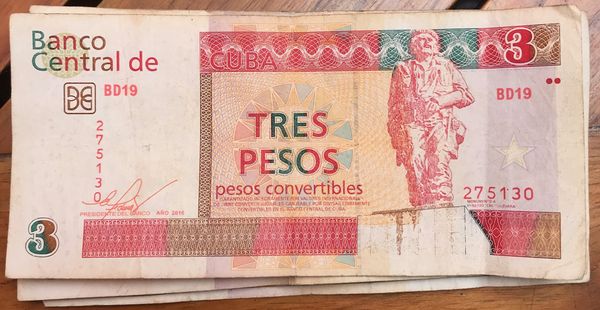Cuba - logistics for non-Americans (2019 edition)
First, a big caveat: this was all drafted in 2019 and not published until 2025. A lot of things have changed since then, not least that the US Department of State has designated Cuba as a State Sponsor of Terrorism. This means that, with limited exceptions, anybody who has visited to Cuba on or after January 12, 2021 is not eligible for travel to the US under a visa waiver (not legal advice!). I’m publishing this with a 2019 date so it fits into the overall sequence of posts as explained here.
Cuban Tourist Card: apparently “most airlines” sell this at check-in but it’s not always easy to find out whether your airline is one of them. Wingo did sell them in Bogotá, but they cost more than at the embassy. It would have been much cheaper than spending an extra night in town, though.
Internet: available by the hour from WiFi hotspots around the city by buying ETECSA scratch-off cards with a user ID and password. We didn’t figure out how to log off except by turning WiFi off on your phone and waiting until the system times you out. This can take up to 20 minutes off your remaining balance, so it’s not practicable to use the cards for multiple short bursts. It’s easy to find a WiFi hotspot: just look for the people glued to their phones in a public park. Many tourist-oriented cafes and restaurants have them as well. The scratch cards are officially 1 CUC each, but you need to queue up at an ETECSA when it’s open and they have cards in stock. Much easier is to buy them for 2 CUC from any of the little shops that sell them. Expensive hotels might charge up to 4 or 5 CUC. Recent news (as of June 2019) suggests that the situation will change soon, with private WiFi networks and possibly even mobile Internet becoming legal.

Money: none of our Singapore-issued debit cards worked in the ATMs there, but my UK Barclays card did, thankfully. This might be because it has a 4-digit PIN rather than 6 digits, or just the luck of the draw when we tried. No American-issued (or American Express-branded) cards will work anywhere in Cuba, we were told. To be really safe, you may want to take enough hard currency with you to cover your stay in case you can’t get the ATMs to work. Don’t take US dollars, though: there’s an extra 10% charged when changing them. Euros and Canadian dollars seemed to be the most popular alternatives.
Credit cards are not accepted anywhere (except possibly the most expensive hotels), but it’s possible to pay for an AirBnB using a card. Apparently there’s a complicated system of, er, money-transfer agents working behind the scenes to receive the payments somewhere in America and then make a remittance to Cuba (minus commission) the same way a relative in Miami would send money.
There are two parallel currencies: the convertible peso (or CUC) and the national peso (or CUP). These are pegged at around 1.03 USD = 1 CUC = 24 CUP. It’s not unusual to see prices quoted in both CUC and CUP, or, equally, to see just a price, and it to be left up to you to figure out which currency it’s in. I hope stallholders wouldn’t let you accidentally pay $10 for a small orange juice, but it must be tempting if rich tourists are going to be dumb.
If you are American, then all bets are off. Presumably you’ll be carrying a stack of Canadian dollars or euros, and trying to avoid government-linked businesses as much as possible. One woman we met was going as far as to write down the name of everybody she came across as well as where she spent every peso in case she gets “audited” in the next five years. Things were obviously very different for the few Obama-era years that the restrictions were relaxed a little, but nobody knows what will come next.